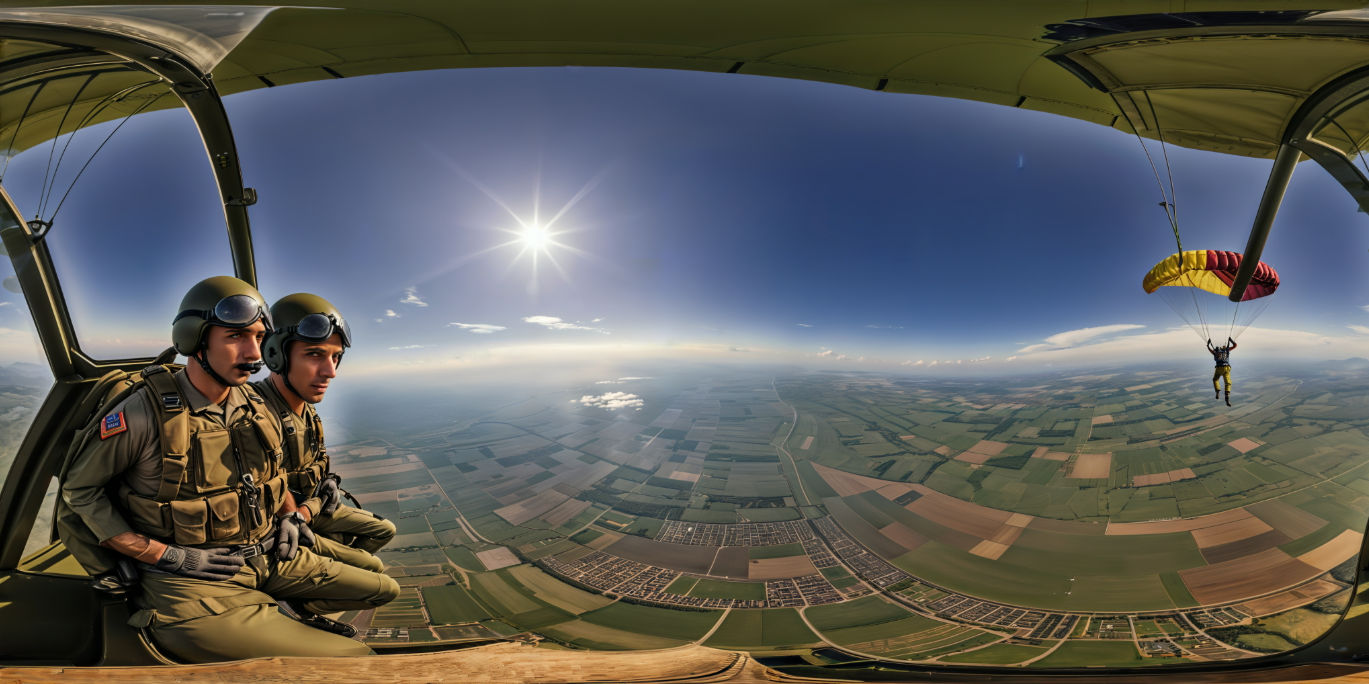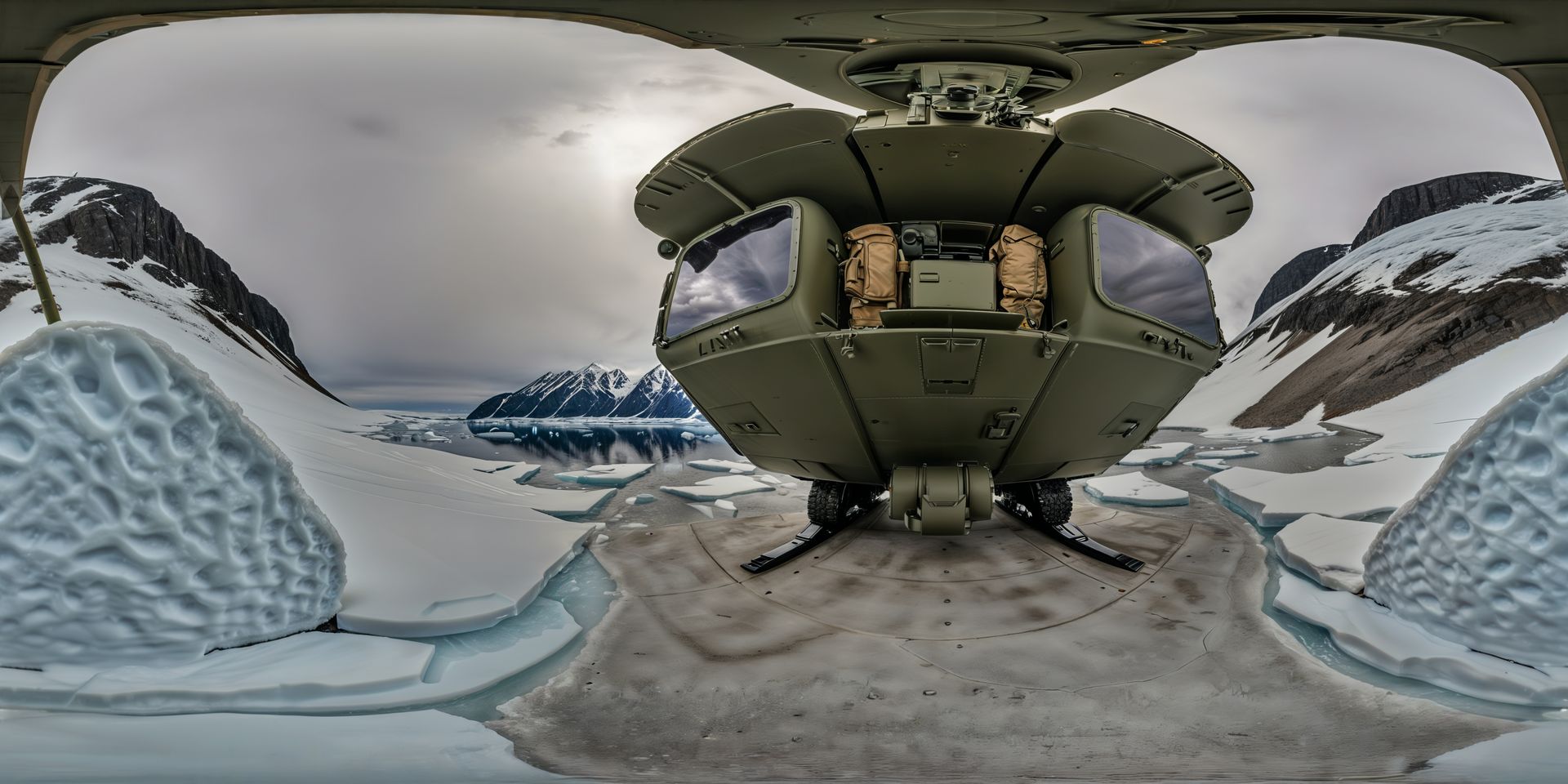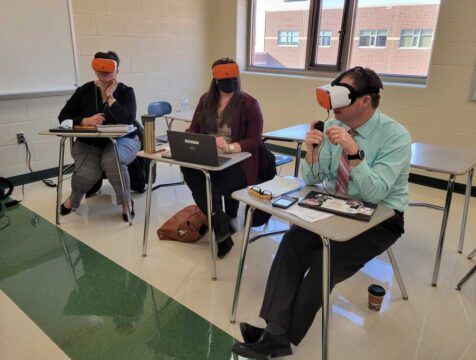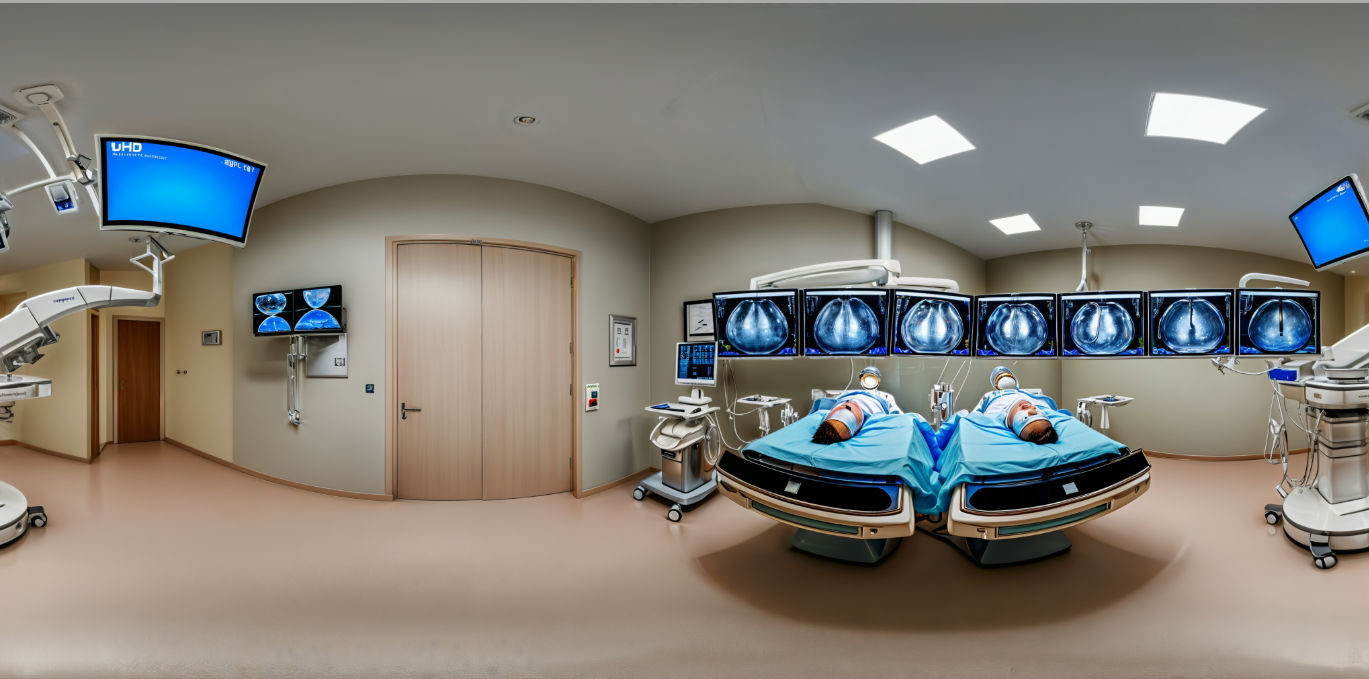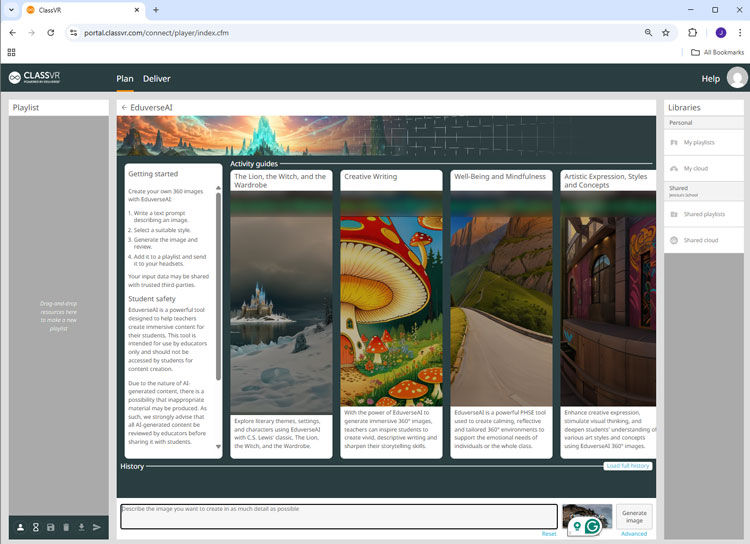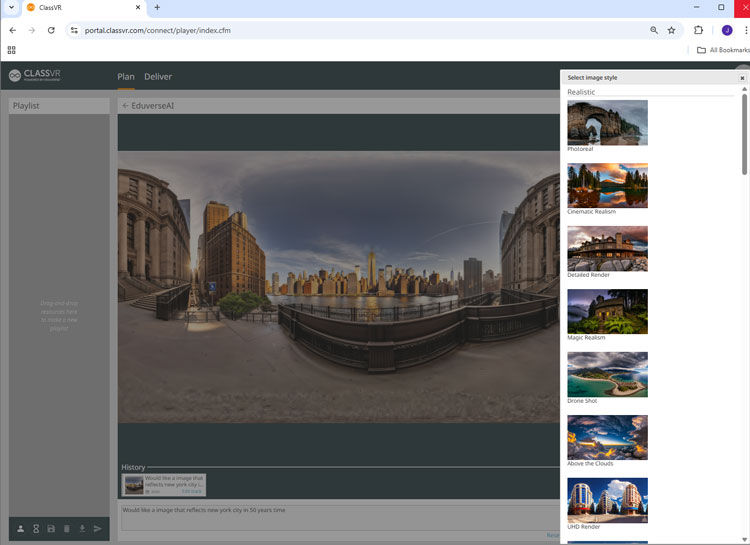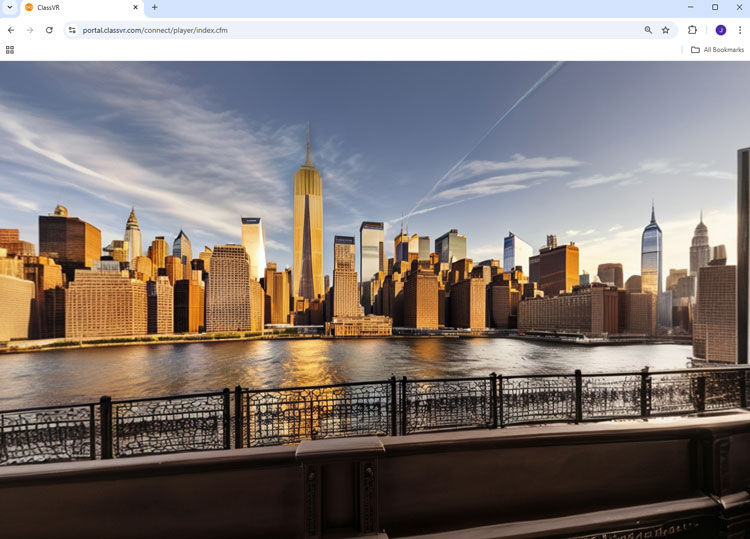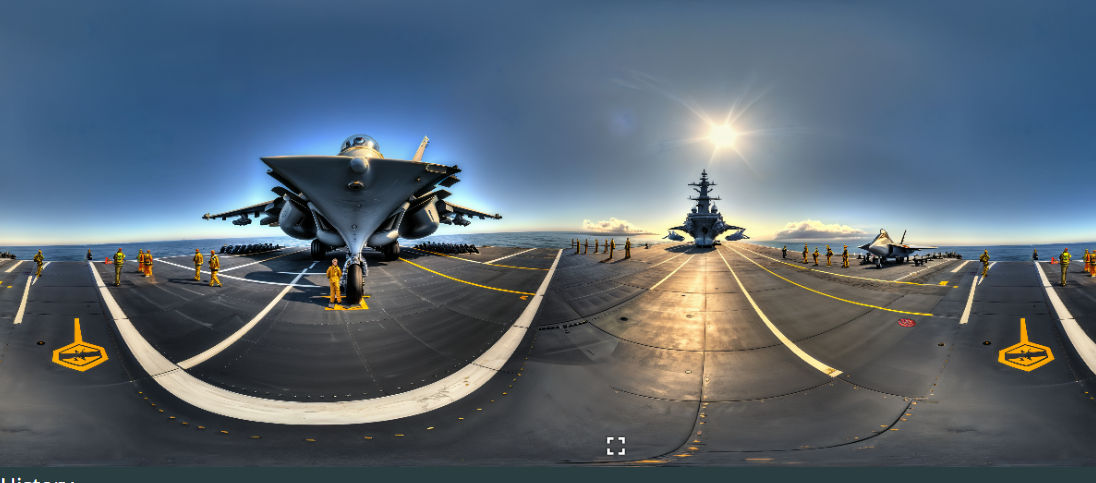Virtual Reality In Military & Defence Training
Reduce Costs for Military Training with Virtual & Augmented Reality
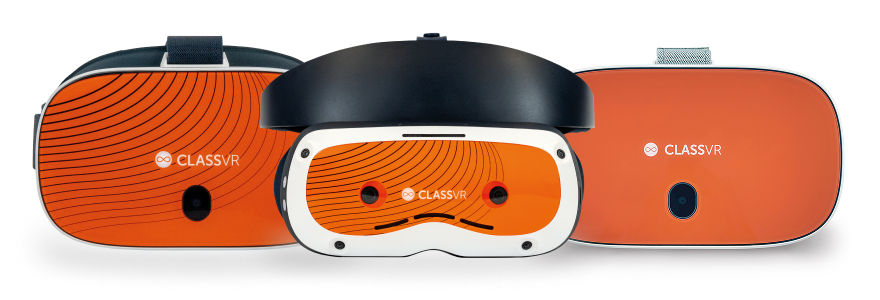
How ClassVR is used for Military Training
- Upload any 360° image or Video
- AI-content creation tool
- Full Freedom of Movement
- No network connection required
Training in Dangerous or Challenging Environments Made Safe and Easy
VR allows military personnel to undertake a huge range of simulations, without the associated costs, thus massively reducing training budgets.
One of the key advantages of virtual reality is the ability to immerse users in a virtual, yet safe, world. This is ideal for applications in the defence sector, providing military personnel and defence contractors a way to gain valuable experience of dangerous or life threating environments from the safety of a training room.
Immersive Training
Trainees could use VR to experience a parachute jump, gaining an awareness of the sensation and disorientation of jumping from an aircraft, without the associated real world flight costs.
They can be placed in fighter jets, submarines, tanks or armoured vehicles to experience the cramped and claustrophobic conditions, or placed in the middle of an active battlefield or patrolled through a hostile environment, learning how to locate enemy soldiers or search for IEDs.
Situational Awareness
Experiencing new environments and activities for the first time, such as a jungle boat incursion, or an arctic mission, provides valuable context and locational awareness of situations that are hard to replicate without significant cost.
Learning skills such as navigation, survival, and teamwork in difficult and compromising situations, can be achieved with striking realism. No other technology can provide this level of engagement or experience in the same immersive way as VR.
Situation Training
VR allows military personnel to undertake a huge range of simulations, without the associated costs, thus massively reducing training budgets.
VR can put a trainee in any number of different places, situations or environments, and can be used to teach awareness, build skills, and provide valuable experience to help when real life requires it.
Medical Application Training
VR can also be used more passively, to help treat PTSD, or provide ‘boot camp’ experience to new recruits, helping them adapt quickly, and with less anxiety, to military life.
Medics can view field surgery and front-line triage, helping them understand and empathise with injured patients.
Create Custom Training Sessions with ClassVR
ClassVR can be adapted to provide different training scenarios and allows military trainers to customise the content delivered to trainees. Upload any 360° image or video, to create specific content from real-world footage and deliver these in training programs.
Use EduverseAI to create Immersive Images of Training situations.
Create realistic training scenarios with ClassVR and our EduverseAI resource. With just a few prompts, you can generate images tailored to your military training program and send them directly to headsets for trainees to experience. This technology gives you the ability to immerse trainees in a wide range of locations, situations, and environments, helping them build awareness, develop skills, and gain valuable experience that can make a difference in real-life situations.
Write a Prompt
Choose a Style
Generate Image
Review & Refine
Miltary Created AI Experiences
Frequently Asked Questions
Why is VR used in the military?
Virtual Reality (VR) is used in military training because it provides a safe, cost-effective, and highly immersive way to prepare personnel for real-world scenarios. Traditional military drills can be expensive, logistically complex, and sometimes dangerous. With VR, trainees can practice missions repeatedly without the risks.
Military organisations also use VR to simulate diverse situations, urban warfare, desert operations, or disaster relief, without needing to physically recreate those conditions. This allows soldiers to build decision-making skills, improve reaction times, and adapt to different terrains and combat styles. Ultimately, VR helps increase readiness and confidence before entering real-world missions.
How effective is VR for military training compared to real-life drills?
VR training is highly effective for developing skills such as tactical awareness, quick decision-making, and equipment handling. Research shows that immersive environments improve knowledge retention because trainees experience scenarios as if they were real. For example, a VR battlefield simulation allows soldiers to engage with enemies, coordinate with their squad, and practice strategy in a realistic but controlled environment.
That said, VR is not designed to replace live drills – it complements them. Instead, VR provides a scalable, repeatable, and low-risk training tool that prepares soldiers mentally and strategically before live exercises. The combination of VR training and real-world drills creates the most effective preparation for modern military operations.
What types of military training use VR technology?
VR is applied across a wide range of military training programs. Some of the most common uses include:
Mission rehearsals – Units can walk through upcoming operations in VR, familiarizing themselves with terrain and objectives before deployment.
Combat simulations – Virtual battlefields where soldiers practice tactics, manoeuvres, and team coordination.
Flight and vehicle training – Pilots and drivers can practice operating aircraft, tanks, or submarines in lifelike virtual simulators.
Weapons handling – Soldiers can learn safe handling, aiming, and firing techniques without expending real ammunition.
Medical training – Military medics can rehearse emergency procedures in battlefield-like environments, improving their ability to respond under pressure.
What are the advantages and disadvantages of using VR in the military?
Safety: Soldiers can train for dangerous missions without physical risk.
Cost savings: Reduces expenses tied to ammunition, fuel, and logistics.
Flexibility: Simulates multiple environments, urban, desert, jungle immersive environments.
Repetition: Allows soldiers to practice skills and scenarios as often as needed.
Scalability: Training can be delivered to large groups without relocating troops or equipment.
